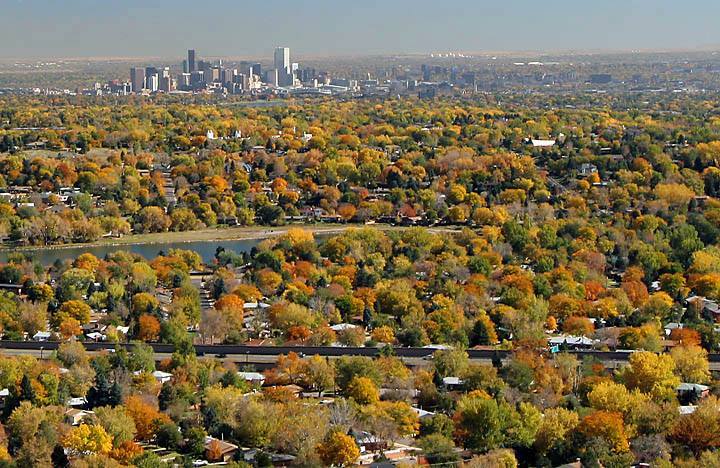
Sunflower Houses in the yard and garden are a fun way for kids to explore the outside world. The house can be used for quiet reading or fun play. You can have your child write poetry, draw pictures, or keep a journal. You can also help your child plant different kinds of flowers.
Sunflower seeds are best grown in direct sunlight. You can plant them directly into the ground or in a shallow trench. After the seeds germinate, you should water them regularly. They will quickly grow. In 7 to 12 weeks the flowers will bloom. As the plants develop, you need to keep the seeds thinned. Once they reach maturity, the seeds will develop deep roots.
Sunflowers are best suited to sunny, well-drained areas. They should be planted at least six inches apart. It is best to plant sunflower seed in a shallow trench, especially if the soil is very hardy. It is also best to use a metal soil rake to level the area before planting.

When you first plant your sunflower seeds, they should be planted at least 1 inch deep. They will take up to 21 days to germinate. Once the plants have germinated it is important to thin them out to six inches apart. In warm, sunny conditions, sunflowers will grow more quickly in the spring months. You should also water them regularly to ensure that they do not become dry.
You can also plant other flowers seeds to make your home more interesting. You can plant scarlet runner beans, morning glory seeds, clover or Cosmos around your sunflower house. They will blossom into beautiful blooms and provide you with foliage. They can also be trained so that they form a covering for the sunflower house.
A sunflower house is a fun place for kids to hang out during the summer. They can use it as a clubhouse, a quiet reading area, or a secret play place. It can also serve as a refuge for wildlife, birds and critters. The sunflowers attract finches and butterflies.
To create a Sunflower House, begin by making an outline. You can use flour to draw a line on the ground or spray paint. You can also use sticks to draw the outline of your home. A doorway should be placed on one side only. This will allow for an easy entry.

It is important to keep your home weed-free. This will keep weeds back from growing again. Mulch around the edges to stop grass growing back. For a wall covering, you can plant Cosmos in the vicinity of your sunflower house.
Before you plant your sunflower seedlings, make sure that the area is clear of weeds. It is also important to consider where the sunflower heads will be facing. They will grow faster and produce more flowers if they are facing the sun.
You can create great floors by using straw after planting. Your sunflower house can also be equipped with short grass to act as a carpet. For easy maintenance, you can also mulch the house's edge.
FAQ
Is it safe to allow my child to climb trees.
Trees are very sturdy structures. Tree climbing poses risks if your child doesn't have the right physical ability.
To climb higher trees, you need to use both your hands as well as your legs. Your child should be able and able to use both their arms and legs to balance.
Also, your child should be able and able to move easily between branches. This requires strength and agility.
You shouldn't force your child into climbing a tree if she's not physically capable.
If you want to climb a tree with your friends, you can do so by sitting on the lower limbs and using a ladder. You can also take a seat on a tree branch and read each other books.
Why is family gardening important?
Family gardeners are passionate to grow food for their families.
Family gardens allow children to learn responsibility while developing patience, cooperation, time management, and problem-solving skills. Gardening also helps parents develop confidence and self-esteem and teaches them how to care for the environment.
People who live in gardens may feel more connected with nature and have a better quality of life. Spending time outside releases chemicals known as "happyhormones", which can make us happier, healthier, and more content.
Family gardening offers many benefits beyond the physical and psychological health. Gardens give back to society by contributing to local economies, conserving natural resources, reducing stormwater runoff, filtering pollutants, and creating wildlife habitats.
What is the best way for kids to get involved in gardening?
Children can help with garden work in two ways.
They can help you learn how to garden as well as give you tips and advice.
You can even have your kids help you plant flowers, trees, and vegetables.
When you're deciding which seeds are best for your area of the country, ask them to plant them.
This is because kids love plants and learn quickly. You can let your kids help you plant food, and they'll love making your yard look great.
How do I know if my child is ready to ride a bike?
Children who are just learning to walk need to practice balancing before trying to pedal a bicycle. Your child should start by standing on one side. Gradually increase her height on the other. After mastering this skill, your child can now stand on both her feet simultaneously.
Children who are able walk should be capable of riding a scooter or tricycle. Ask your pediatrician about special equipment that your child may need to be safe.
Your child is at least four years old when you can start to ride a bike. Begin by teaching your child to balance on two wheels. Then teach your child how to steer using hand signals. Your child should learn how to safely stop using hand signals.
Safety must always come first, no matter how old your child may be. You can teach your children to be safe by teaching them to cross the street with both eyes and to use helmets when riding bikes.
What age should my child reach before they can go outside?
Every day, children need sunshine and fresh air. So whether your kids are toddlers, preschoolers, or elementary schoolers, please encourage them to spend as much time in the sun as possible.
Try to limit your exposure to snow if you live somewhere cold. If your children are young, ensure they wear sunscreen and hats whenever they are outside.
Children under age five should only spend 10 minutes at one time outside. You can increase the time until you have two hours each day.
Statistics
- The U.S. outdoor recreation economy supports about 5.2 million jobs, generates nearly $788 billion in consumer spending, and accounts for 2.1 percent of GDP. (wilderness.org)
- Later in life, they are also more likely to result in delinquency and oppositional behavior, worse parent-child relationships, mental health issues, and domestic violence victims or abusers10. (parentingforbrain.com)
- Remember, he's about 90% hormones right now. (medium.com)
- Ask yourself, 'What do I want to accomplish, and is this likely to produce that result?'" 2. (webmd.com)
- A 2019 study found that kids who spend less time in green spaces are more likely to develop psychiatric issues, such as anxiety and mood disorders. (verywellfamily.com)
External Links
How To
Why is outdoor activity important for children?
Outdoor activities enhance children's mental, physical, and emotional abilities. When playing outside, children learn how to communicate positively with others and how to be independent. Children who spend more time outdoors feel better and are able to focus better at school.
Outdoor play is vital for developing children's motor skills, coordination, balance, strength, and flexibility. Outdoors, children can explore nature and learn about plants and animals. While playing together, kids can make friends.
Exercise helps children improve their memory and concentration. Games such as hopscotch and tag can help children develop problem-solving skills. Children learn teamwork and responsibility when they work together with their peers.
Children who spend time outdoors have higher self-esteem. Children who feel confident in themselves tend to be more responsible and adhere to the rules. This will make them more likely succeed in school.
Outdoors provides children with the opportunity to experience success, failure, or even danger. These experiences teach children life lessons and prepare them for real-life situations.
Children can spend time outside collecting and observing wildlife. These observations provide children with insight into the natural world, and help them to be more aware of their environment.
Children's senses are sharpened when they are outside. Children are able to see colors and hear sounds. They can also smell odors and taste different flavors. Children are attracted to the sights, smells and tastes of nature. Outdoor activities provide the opportunity to build their bodies and minds as they get older.
Children who spend time outdoors are more likely to have strong bones and muscles. Research has shown that children who spend more time outside are less likely to sustain injuries than those who do not.
Outdoors provides children with opportunities to practice social skills. To build a fire, or collect food, children need to work together. They learn to give and receive kindnesses from one another.
Outdoor activities can also increase bone density and muscle mass for children. You can also benefit from outdoor activities by improving your mental health through lowering stress levels.
Outdoor activities promote family bonding. To foster healthy child development, spending quality time together is essential. However, many parents find it difficult to take time away from work and home responsibilities. Outdoor activities are a great way for families to connect and bond.
Outdoor activities are good exercise for the soul. The beauty of nature gives us all the things we need: sunshine, water and trees, flowers, birds, and fresh air. Consider taking your kids camping if you are looking for something exciting and fun to do with them. Camping is an excellent way to reconnect with nature and create memories that will last a lifetime.
Camping is a great activity for all ages. You don't have to be a camper to enjoy camping. There are many ways you can introduce your children to it safely. A day trip to a state parks is one way to start. Both children and adults will find many activities in the park. It is possible to bring your own snacks and drinks, so you can take part in the fun with your children.
Make sure you have a plan if camping is something you want to do regularly. Check out camping supply stores to see what you might need. It is important to consider how you'll transport everything. A large tent may weigh as much as 100 pounds. It is best not to take too much gear.
Camping is an option if your home is closer. Go hiking at a nearby park. A hike in the woods and along a river is a great idea. Bring along a picnic lunch and enjoy exploring the area. This is an excellent way to introduce children and young people to the wonders that are nature.
You can also make a camp in your backyard. Make use of any space available. Make a shelter from branches, leaves or cardboard boxes. Create a fire pit next to the shelter. To create a ring around your fire pit, use stones. Children can roast marshmallows on the fire pit by sitting in the circle.
You should pack your campsite quickly when you're ready for departure. You should also clean up after your campsite. Destroying animals and plants can be very harmful. You also make it more difficult for others enjoy the same natural beauty.
It doesn't matter whether you prefer to camp or to explore the natural world close to your home. It doesn't really matter what you do, as long as you have fun and spend time together.